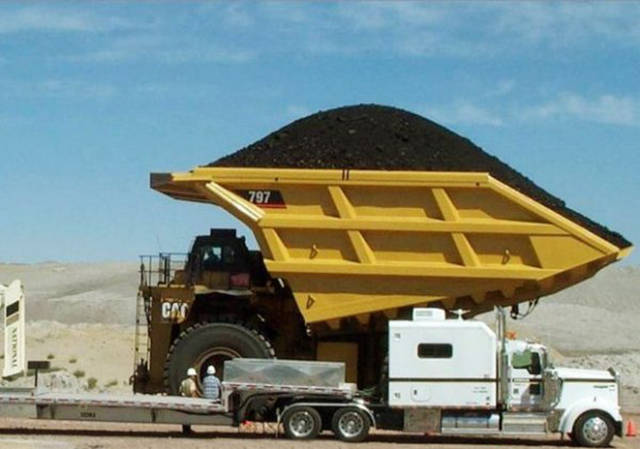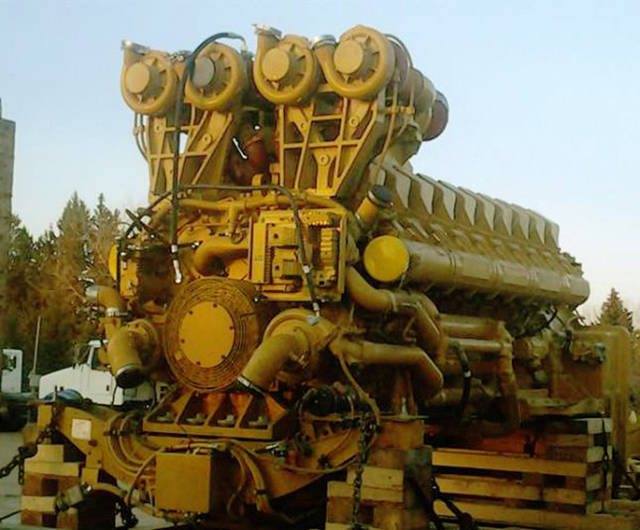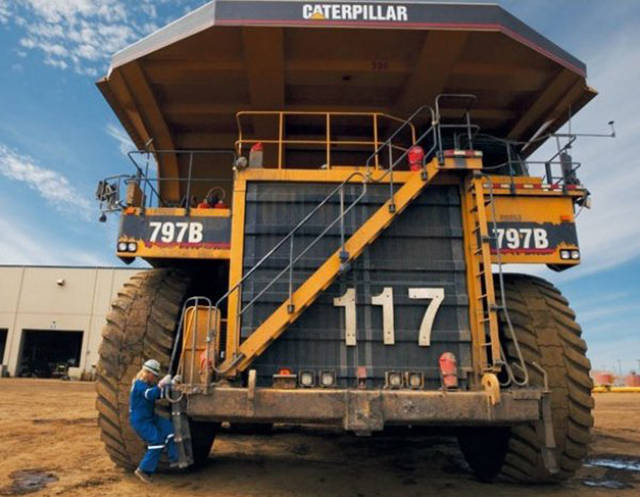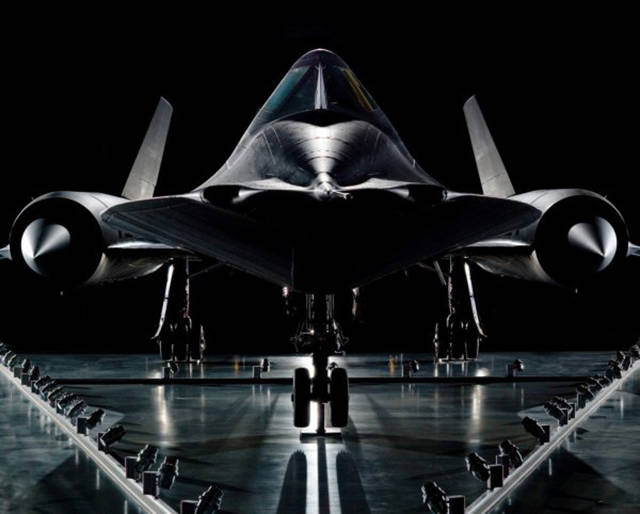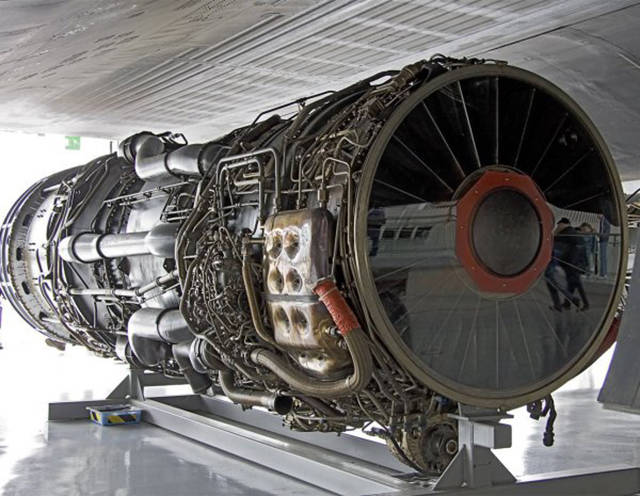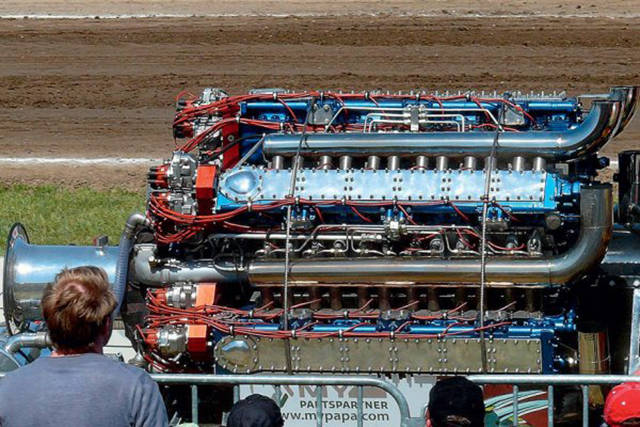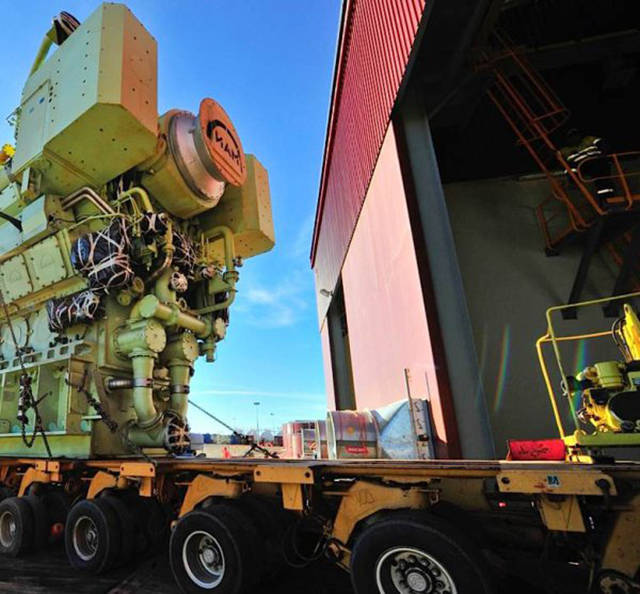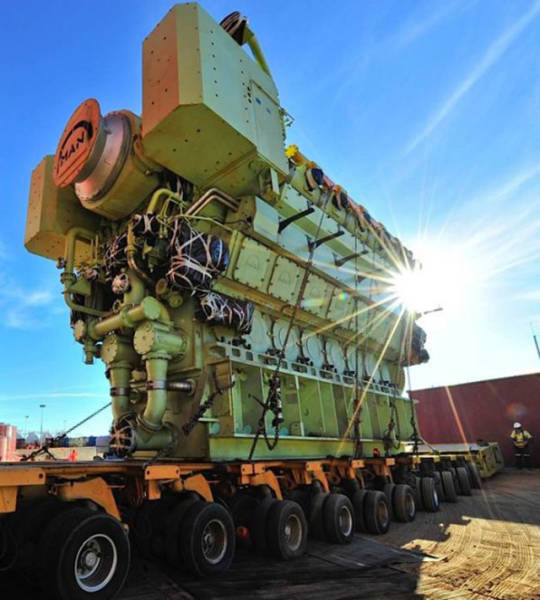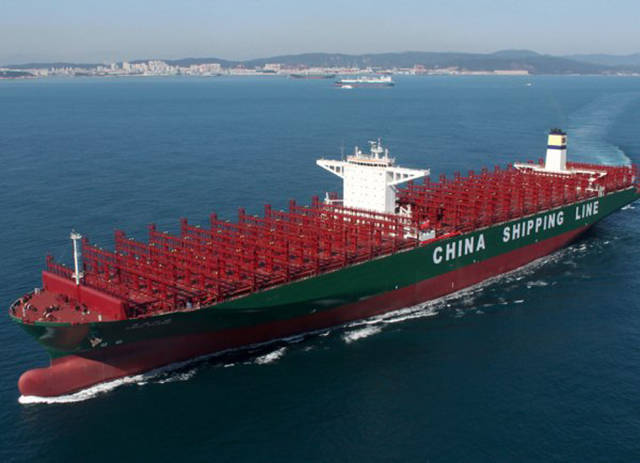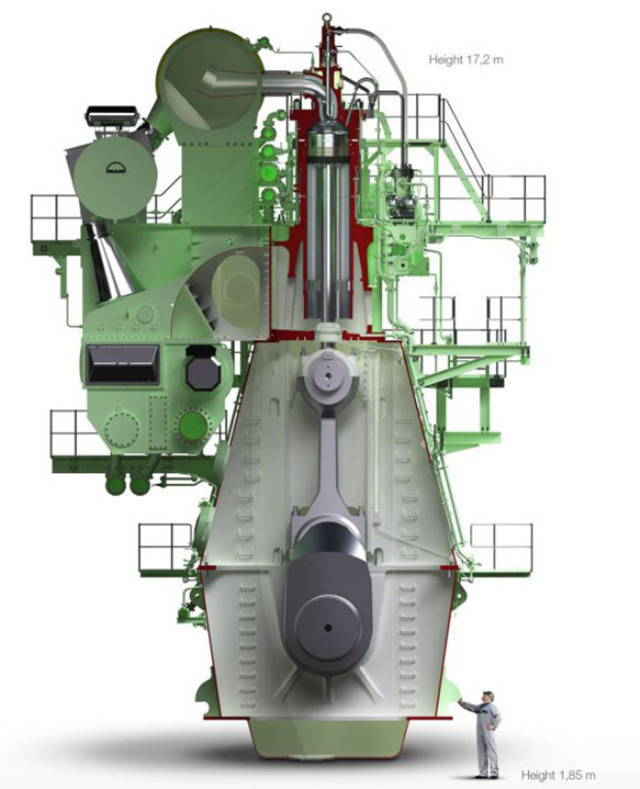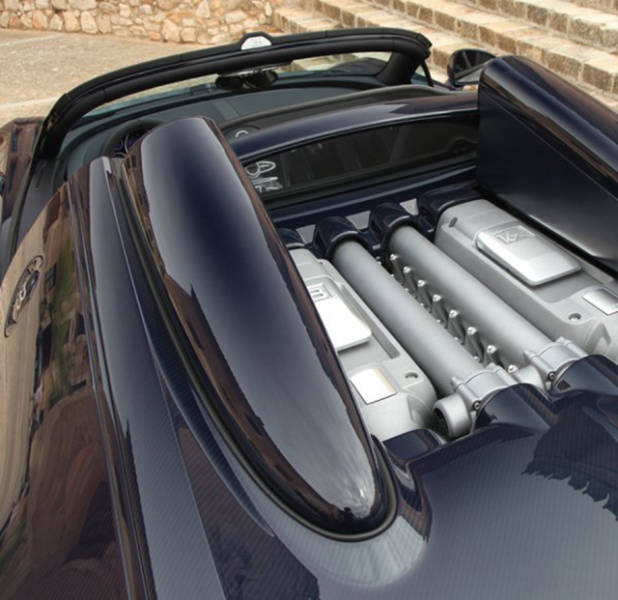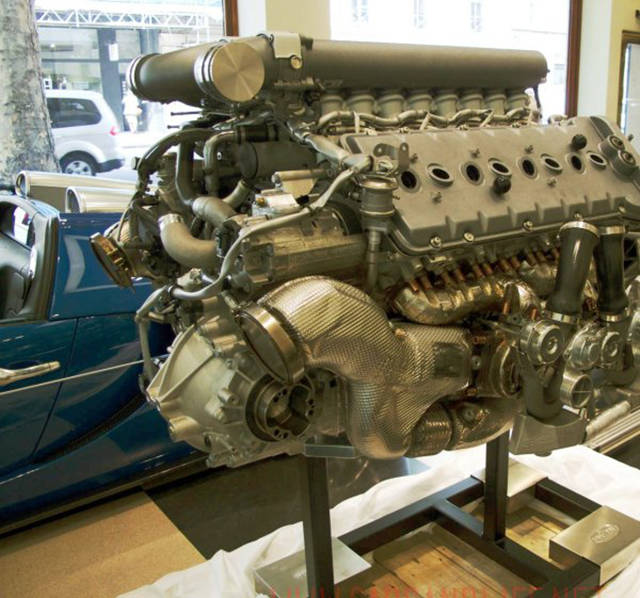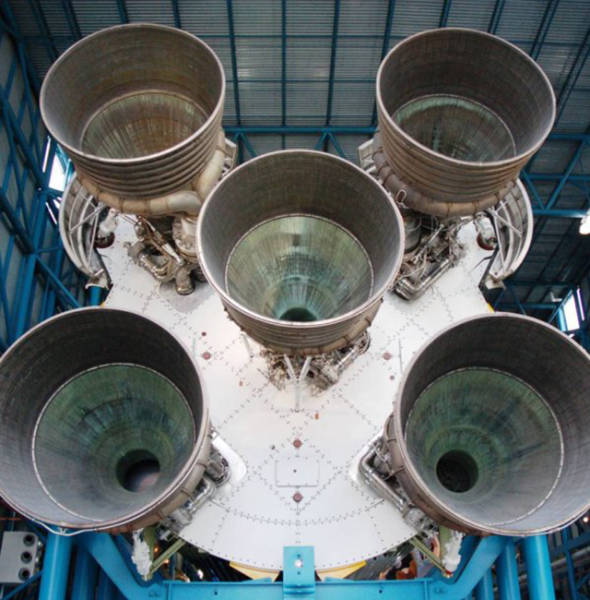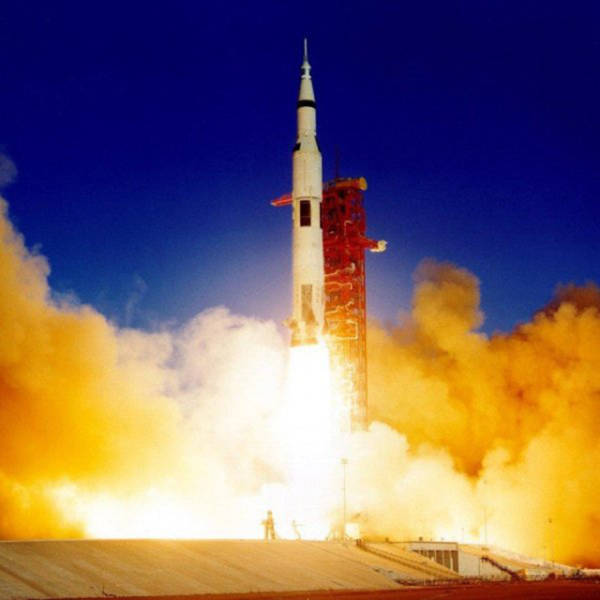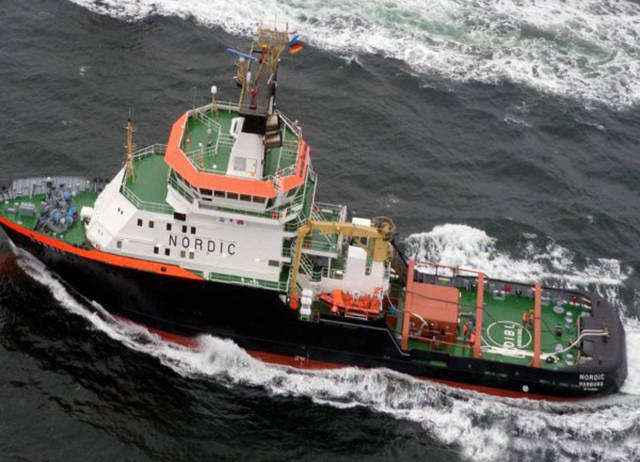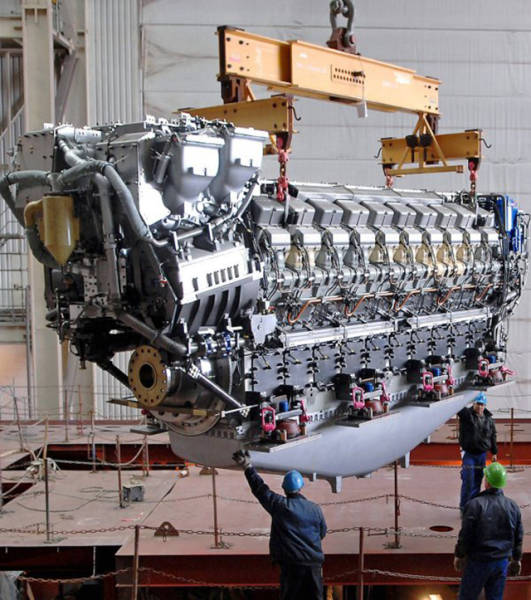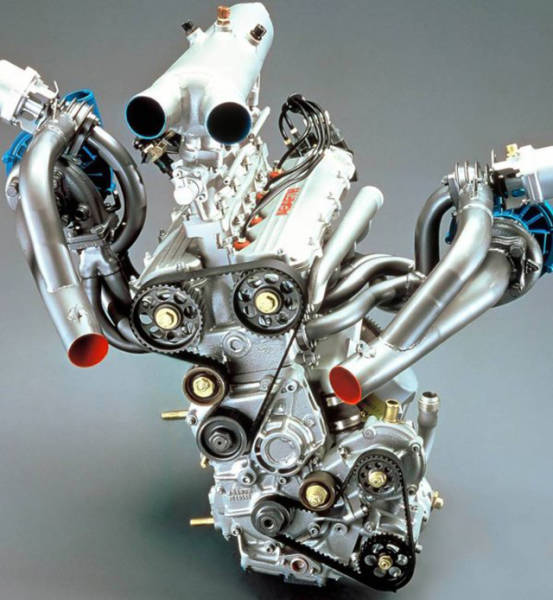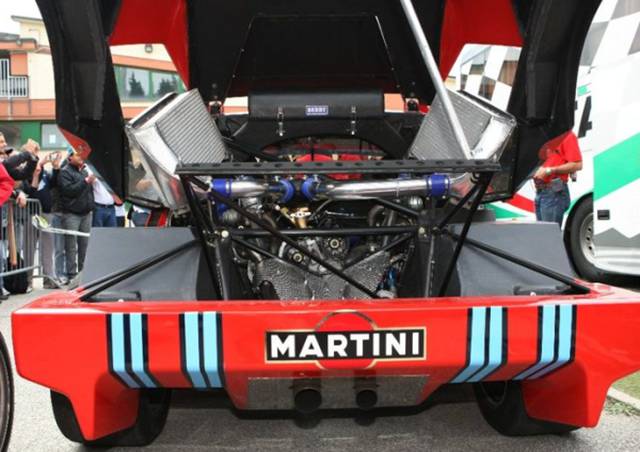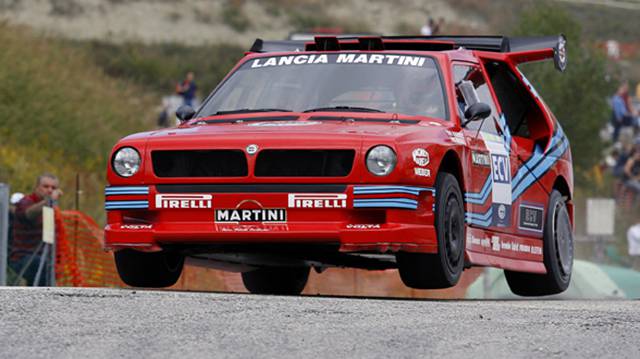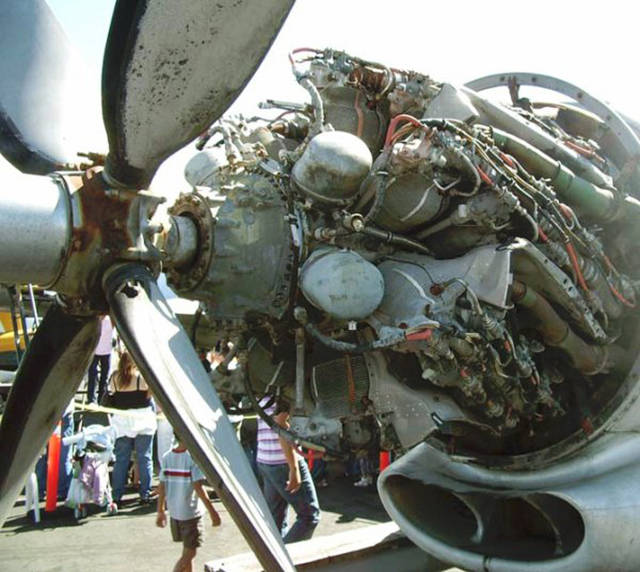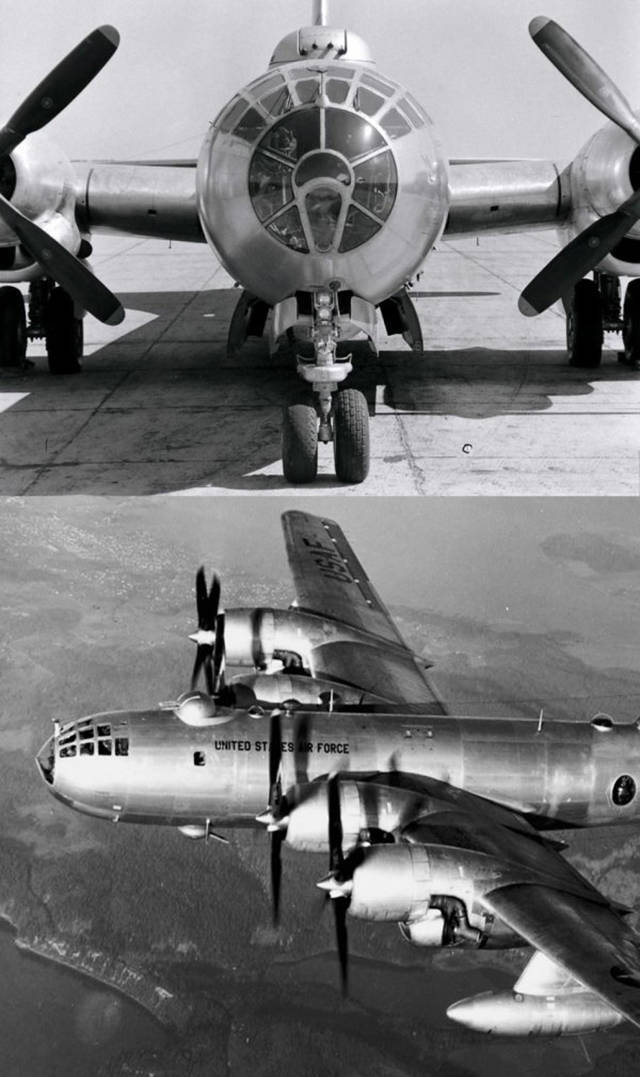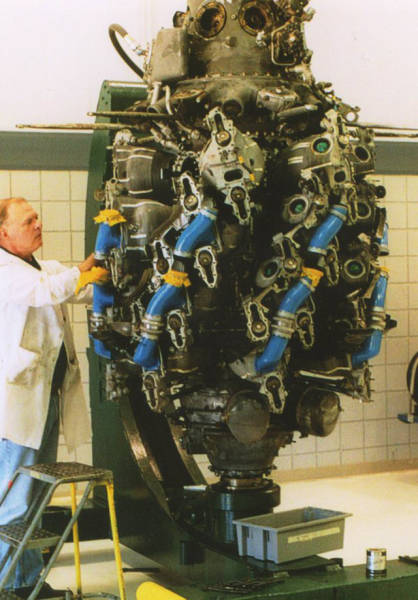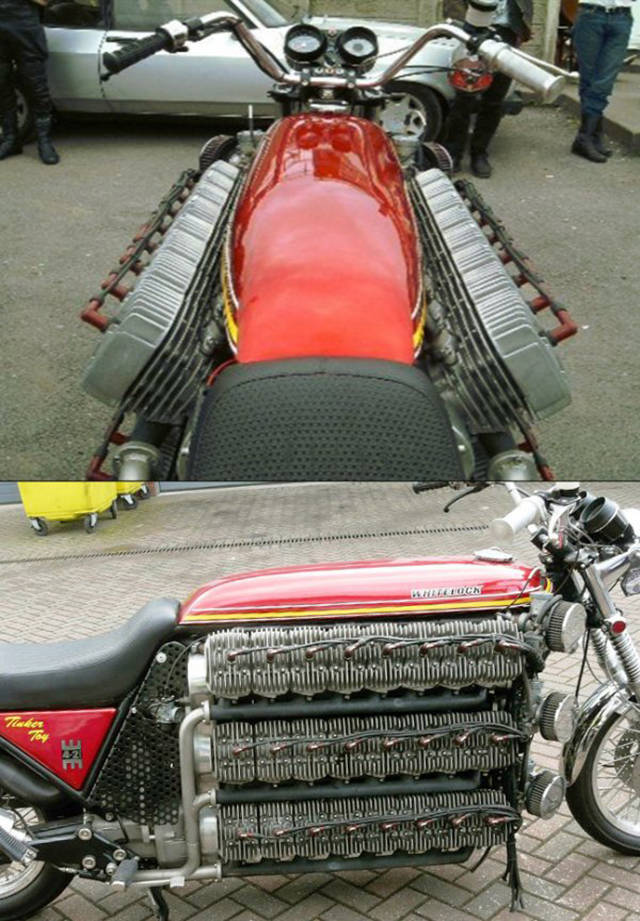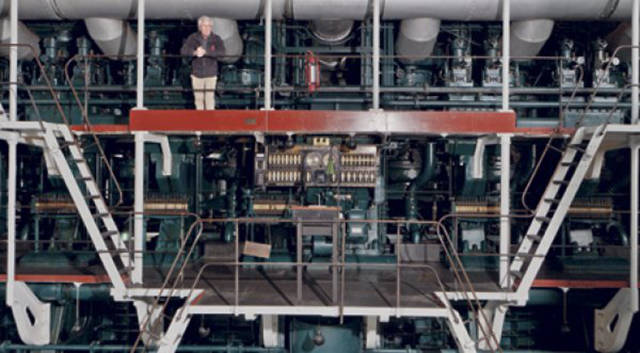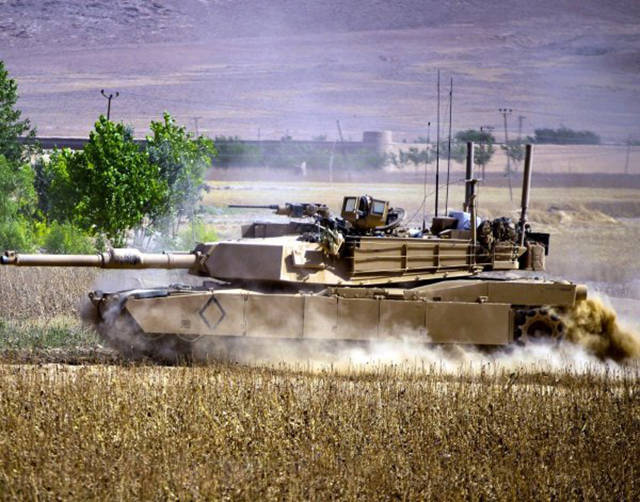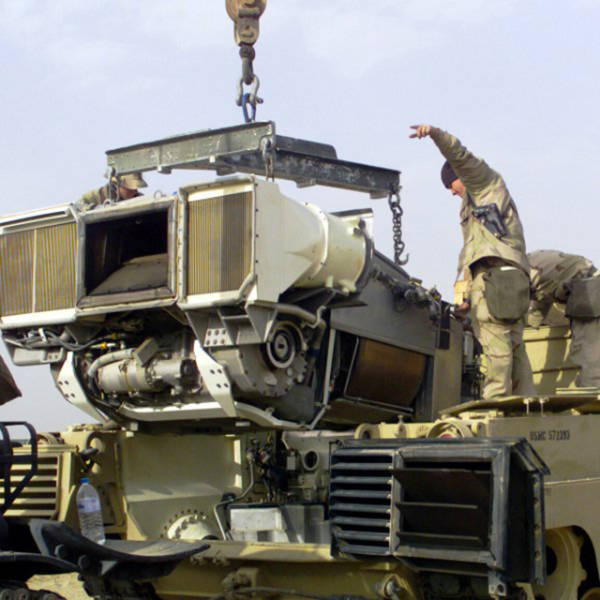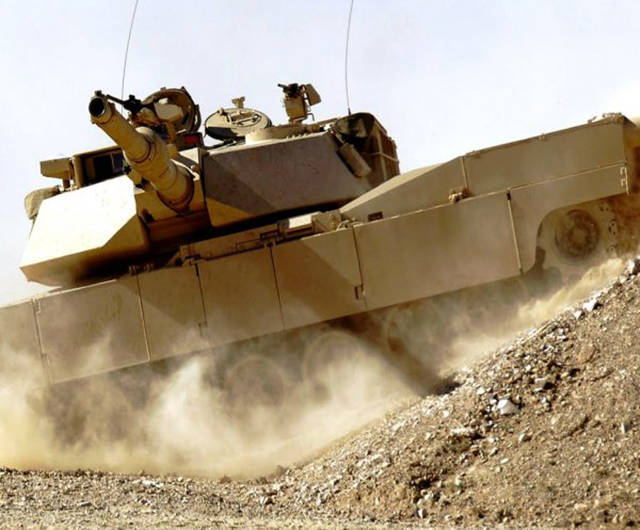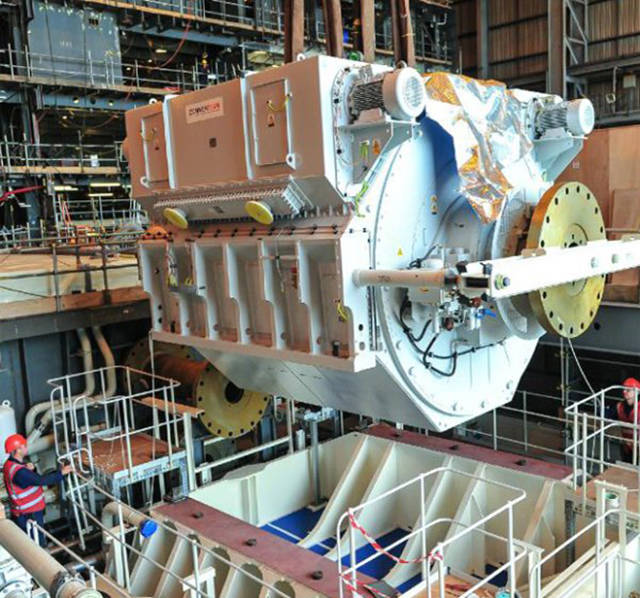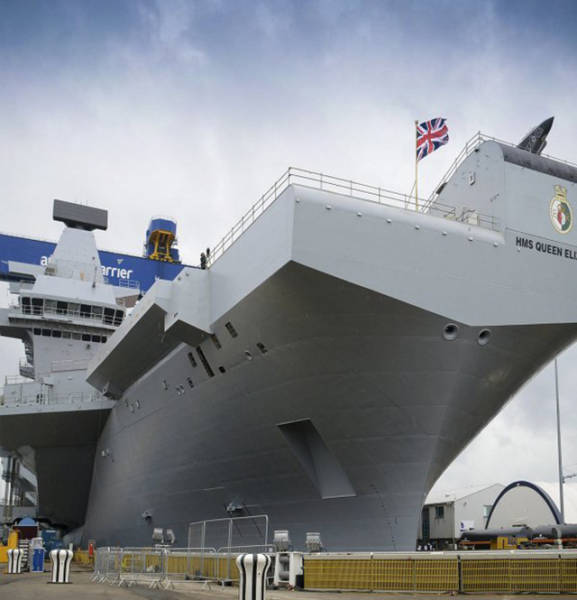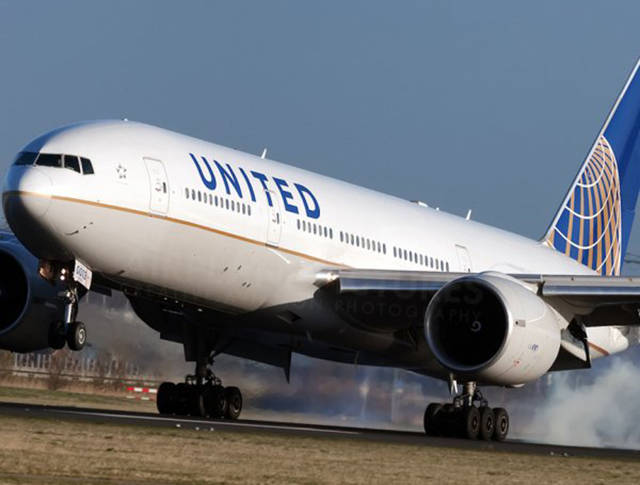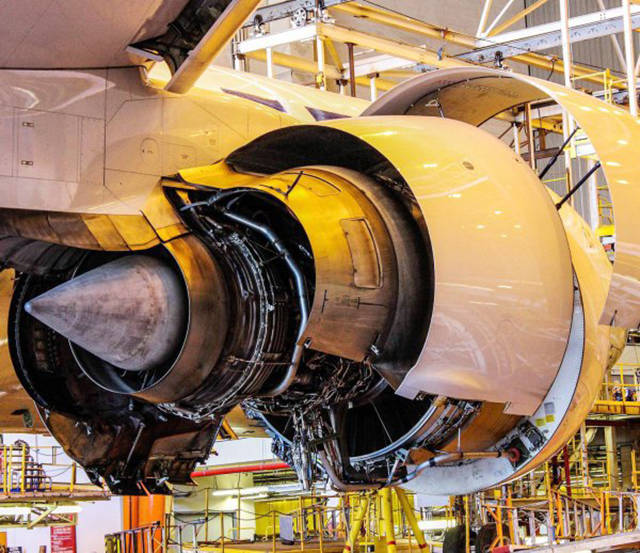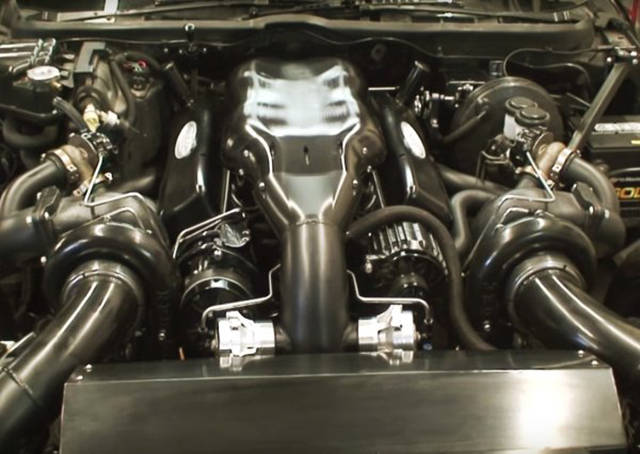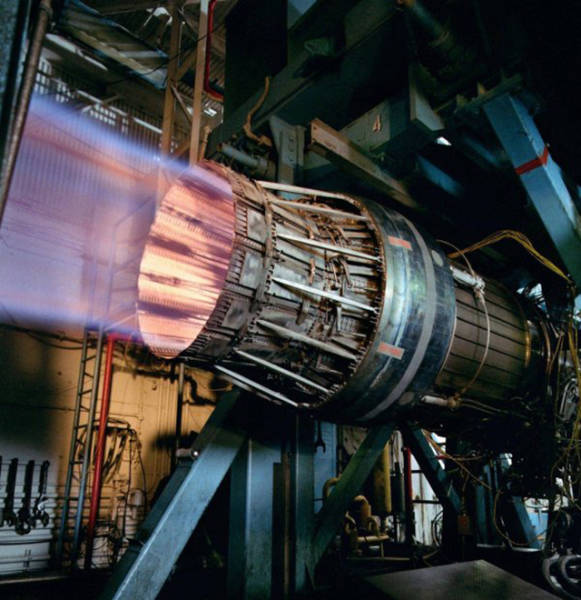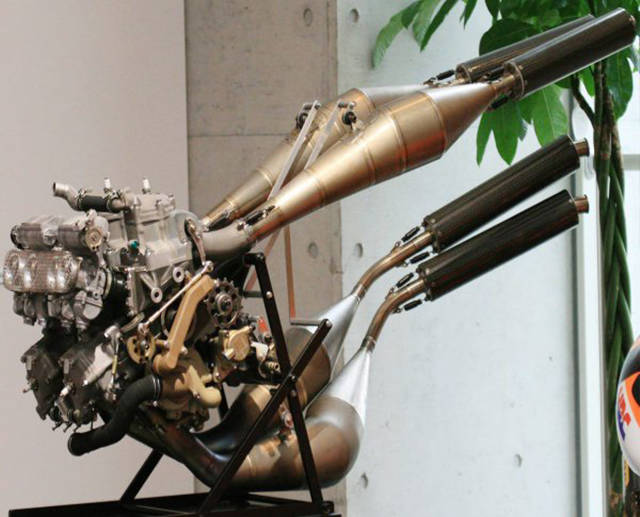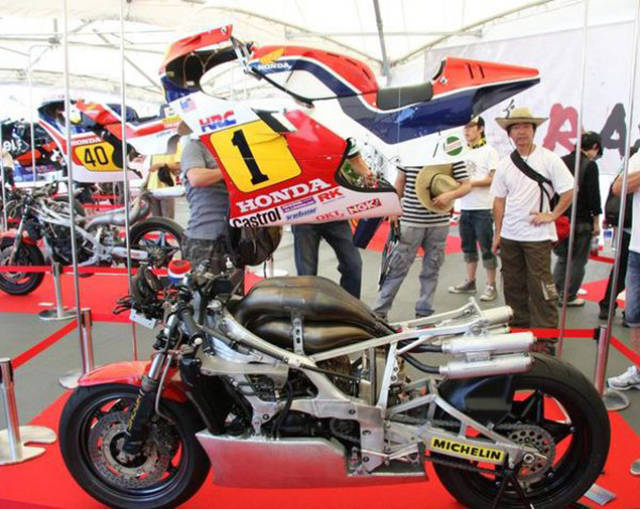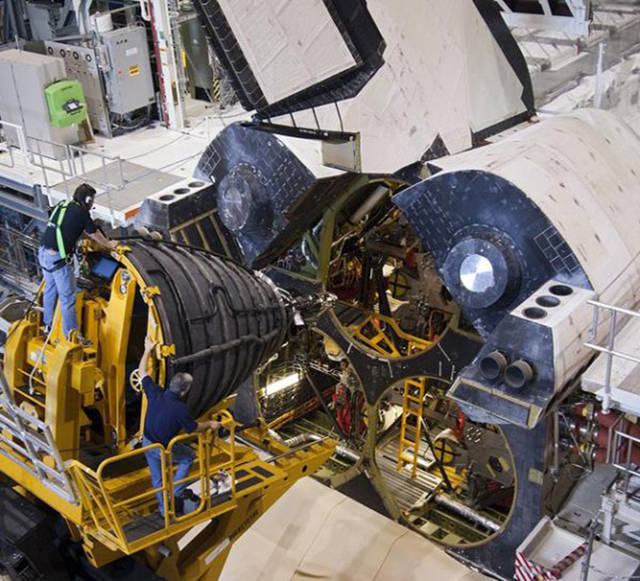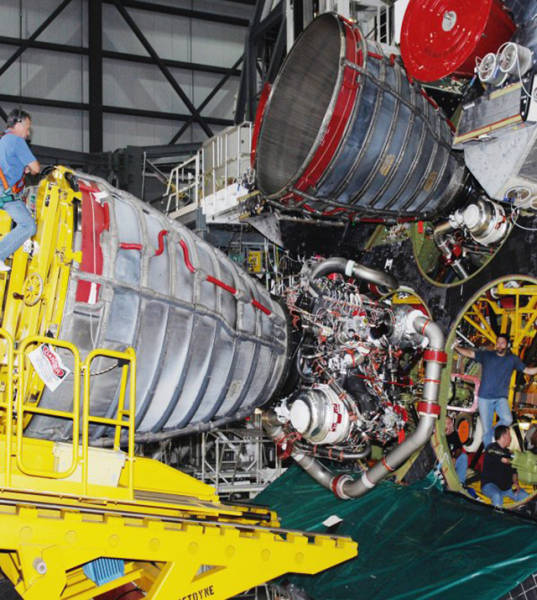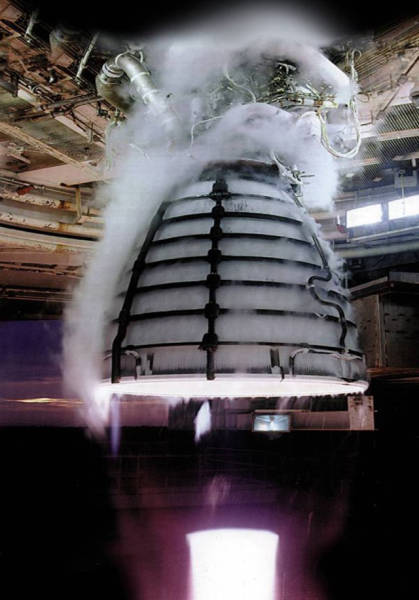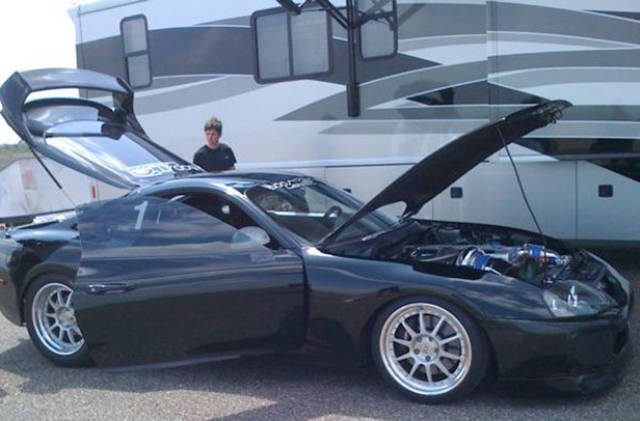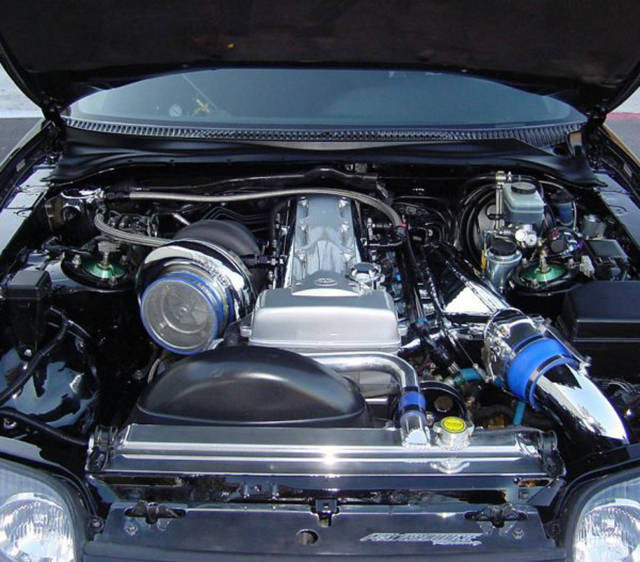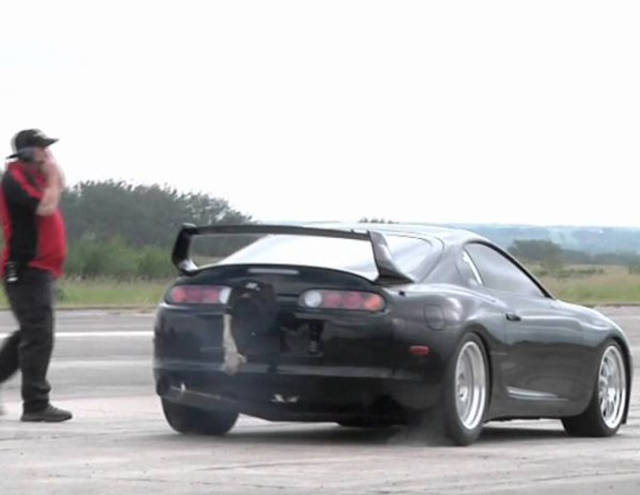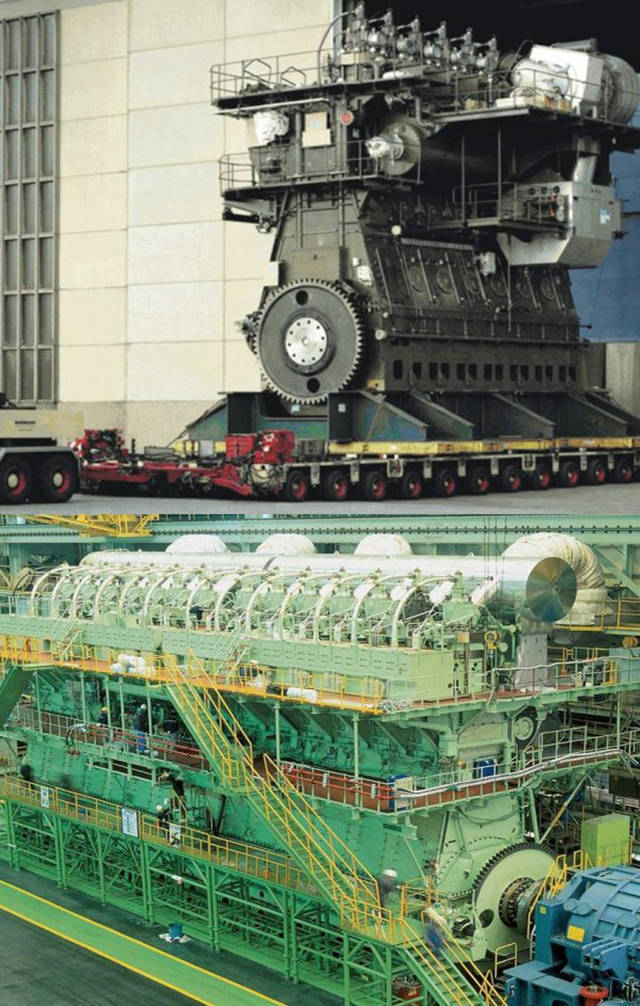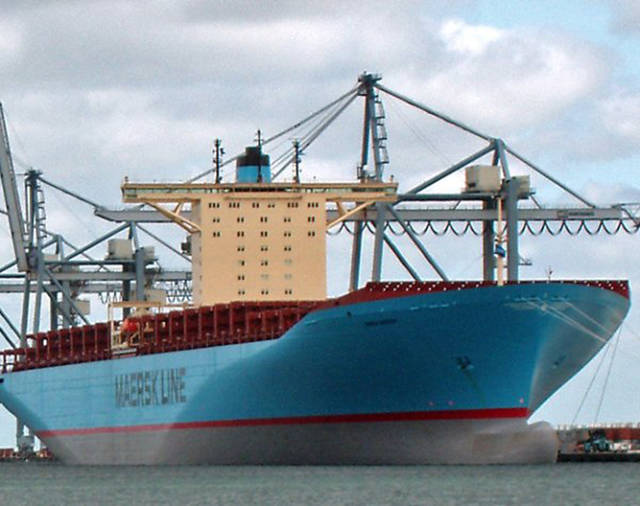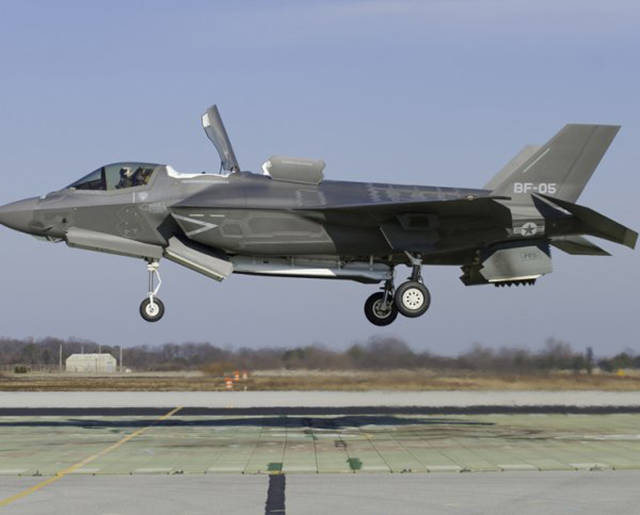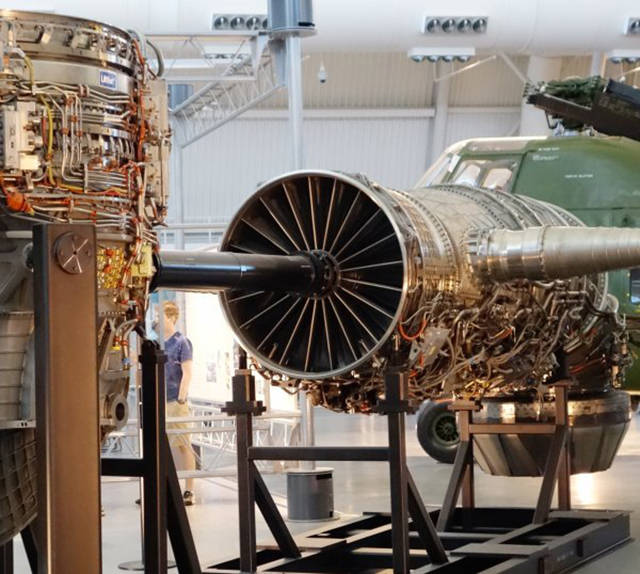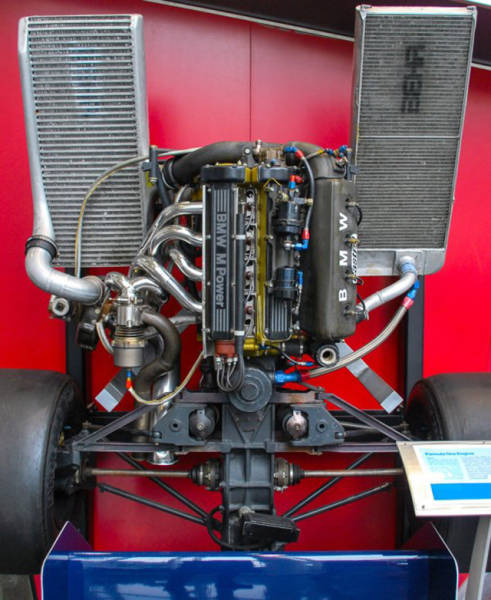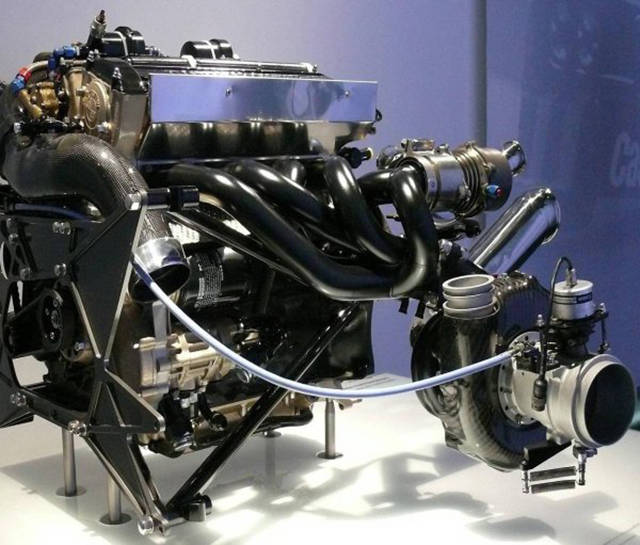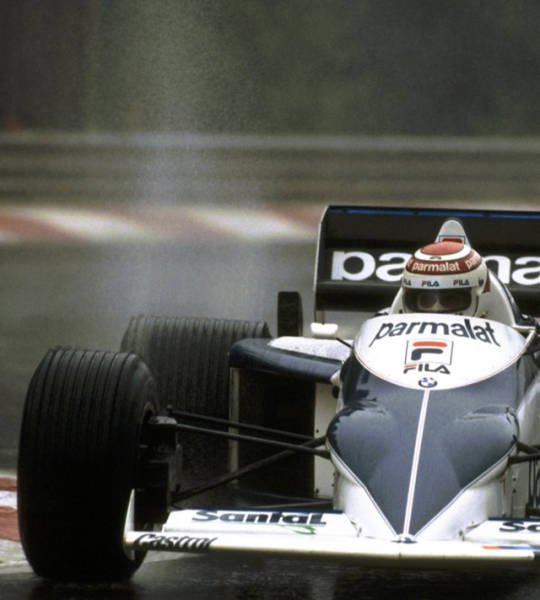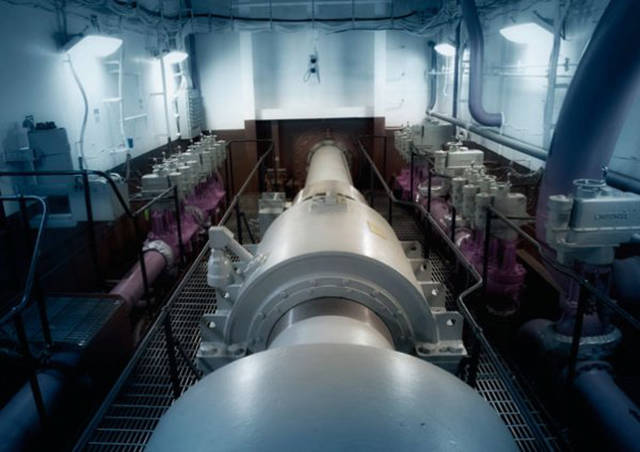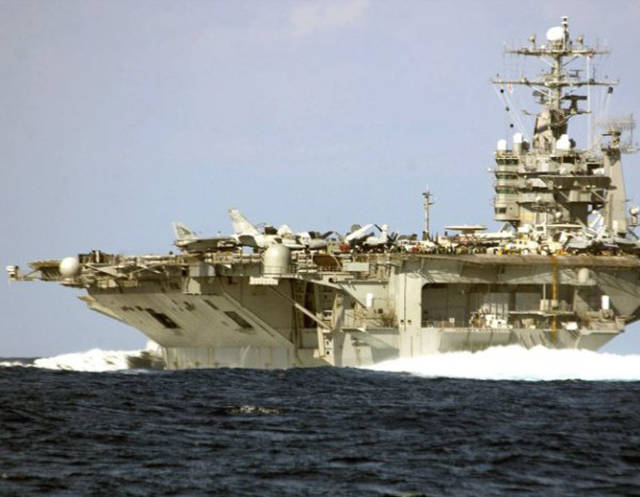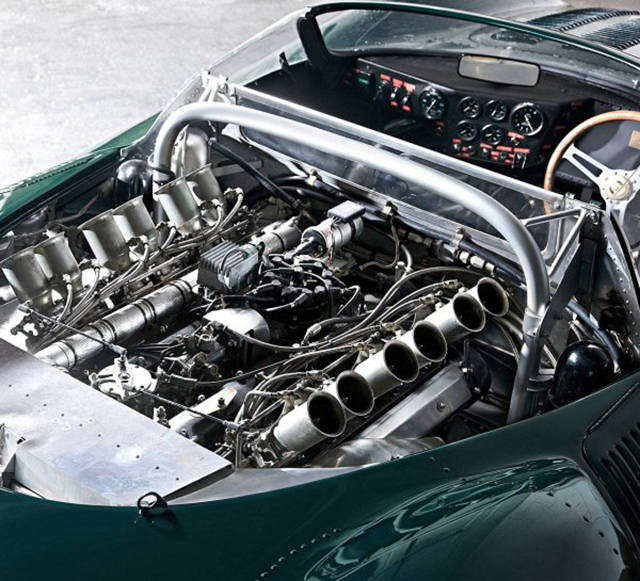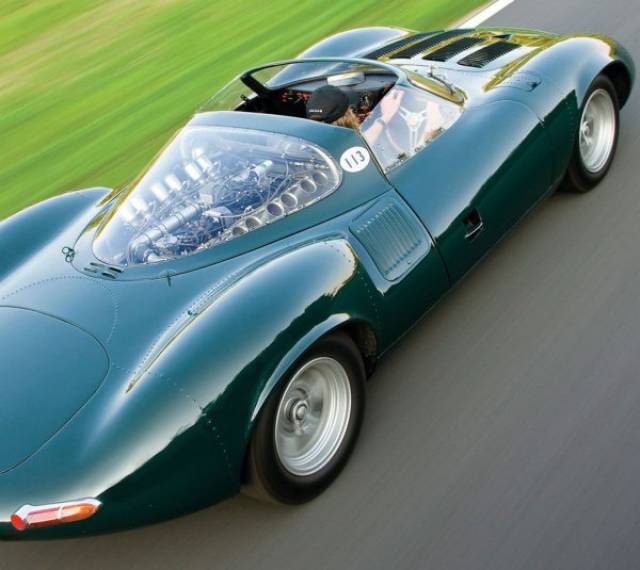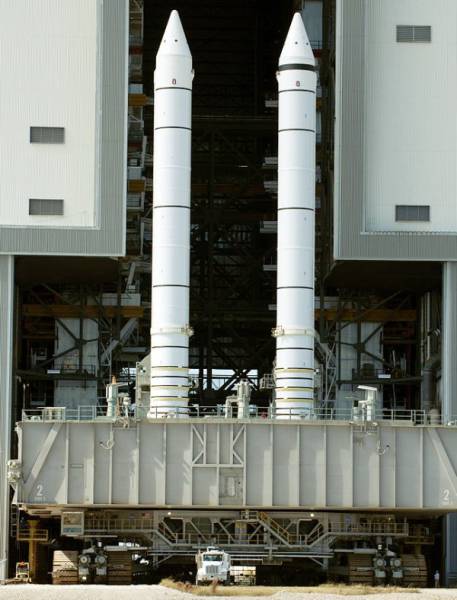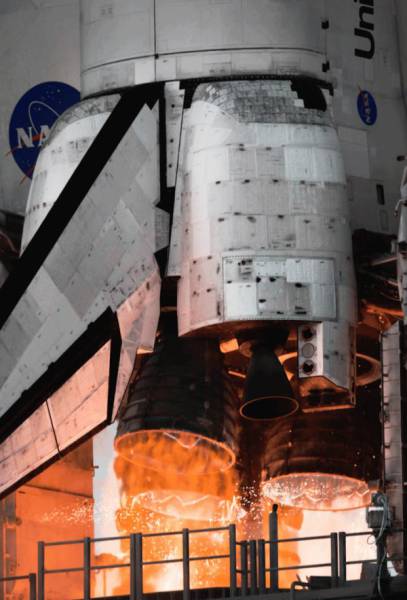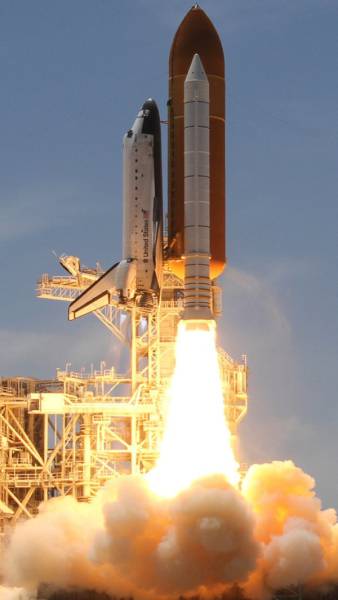Some of the world’s largest engines.
This is Caterpillar’s largest dump truck and engine, the “797F”.
The 20 cylinder, quad turbocharged diesel engine churns out 4,000hp (horsepower).
Caterpillar’s 797F engine can haul a max weight of 363 tons. If you include the truck’s weight plus max load weight, it can move a total gross weight of 1,375,000lbs.
SR-71 Blackbird’s Pratt & Whitney “J58” engine
The Blackbird is powered by two J58 engines. They are single-spool turbojets with afterburners that each deliver 25,000 pounds of force. This equates to the SR-71’s ability to reach a speed of over Mach 3. As in, it could travel at 3 times the speed of sound or 2,300mph.
A wildly large and sophisticated engine that was originally built by the Soviet Union in 1970 is called the “Zvezada M503A”. Leave it to a German racing team to use it for an interesting cause: entertainment by way of the tractor pulling giant known as “Dragon Fire”. This large beast has 42 cylinders that displaces 147.1-liters along with the complexity of 168 valves and 126 spark plugs. The result is 10,000hp of redneck fun.
MAN “B&W 12S90ME-C Mark 9.2” engine.
This huge engine set the world record in October of 2014 for the “largest diesel engine” ever built. It is also being used to power the largest ship in the world (pictured below).
It’s not only physically the largest, by moving the low-speed two-stroke diesel engine, it’s one of the most powerful. The horsepower is rated at whooping 98,000.
This is the Bugatti Veyron’s “EB 16.4” engine.
The current 2015 “Grand Sport Vitesse” Veyron engine along with the World Record holding “SS” version are powered by an 8-liter, 16 cylinder engine. Bugatti took two V-8 engines and bolted them together plus they added 4 turbochargers (quad-turbo) to get its current 1,200hp.
With this engine the “SS” version achieved the title of world’s “top speed for a street-legal production car” at 267.7mph.
Rocketdyne’s “F-1” rocket took America both into outer-space and eventually to the moon. The F-1 rocket severed as the first stage booster for launching the “Saturn V” rocket. Development of the F-1 began in the late 1950’s and was used by NASA in the ’60s and into the ’70s.
The Saturn had five F-1 boosters powered by a single-combustion chamber with liquid-propellant.
Later F-1 models where used to launch the “Apollo” missions. The pound-foot thrust of a single F-1 is 1,746,000 which burned from lift-off for a total of 165 seconds before ejecting back to Earth. To this day, the F-1 is the most powerful “single-combustion chamber liquid-propellant rocket engine” ever developed.
MTU Series 8000 propulsion engine
This engine powers the German Rescue Tug-boat “Nordic”.
The tug-boat uses 2 of these 20 cylinder engines with each pushing out 12,200hp.
Lancia’s “Triflux ECV1” engine was used on the late ’80s “Delta S4” Rally car.
They took a 4 cylinder engine and added two turbo chargers to crank out 600hp.
It may not seem like a big deal but this engine would go on to influence engine designs for one of the world’s most famous automotive companies.
S4 engineer Claudio Lombardi was hired to develop future engines for this little company named “Ferrari”. More specifically, he worked on engines for Ferrari’s legendary F-1 race cars.
This is the Pratt & Whitney R-4360 Radial Engine “Wasp Major”. Developed during WW2 for aircraft such as the B-50 Superfortress (pictured below).
The engine has 28 cylinders that are separated into 4 rows with a horsepower out-put of 3,000.
The R-4360 is one of the world’s largest and most complex piston driven engine ever made.
This $840,000 creation has a Kawasaki engine with 48 cylinders. From the crazy mind of builder Simon Whitlock, his motorcycle distributes power through a BMW gearbox from six Jaguar “E-type” distributors.
And the name of this creation? It shall be called the “Tinker Toy”.
For 30 years, the 3.1 million pound “H.C. Oerstead” engine held the title of world’s largest diesel engine. In addition to being huge, it slowly rolled out 22,500hp.
What powers America’s Main Battle tank?
M1A2 Abrams tank engine is named the “Honeywell AGT1500”. A gas turbine engine with 1,500hp, hence the name “AGT1500”, will move this 60 ton, four crew vehicle around the battlefield at a max speed of 45mph.
UK’s HMS Queen Elizabeth-class aircraft carriers are powered by two Rolls-Royce “Marine Trent MT30” engines. Each engine produces 48,000hp which moves this 920ft. long aircraft carrier.
A work-horse in the aviation world deserves some luv.
Two “PW4070/4090” turbofan jet engines, each pushing out 94,000 pound-foot of thrust, move the Boeing 777 to a top speed of 590mph.
Nelson Racing Engines (NRE) Corvette engine build
NRE owner Tom Nelson took this 1990 “C4” Corvette and built his own engine with a twin-turbo set up that rips out 1,690hp.
The F-100 Super Sabre was the first fighter jet capable of supersonic speeds (faster than the speed of sound), with initial record of Mach 1.05 on May 25th of 1953.
The Super Sabre was powered by a “XJ57-P-7” engine and went on to be the longest fighter to serve in the Vietnam War.
Honda created a racing motorcycle engine that won a total of ten 500cc World Championships, including six in a row from 1994 to 1999. That engine is the Honda Racing Corp. “NSR500”. Its two-stroke V-4 engine produced 200hp. In 2001 the legendary rider Valention Rossi used it to win the 500cc World Championship.
Moving the engine of NASA’s Space Shuttle.
“Discovery” space shuttle’s Main Engine (ME-1/2/3) for launching was developed by Pratt & Whitney’s Rocketdyne team. It is named the “RS-25”.
Three 7,775 pound engines use liquid hydrogen to individually fire out 512,000 pounds of thrust.
These engines sent the last Space Shuttle into the skies and is scheduled to be used in 2018 for the first SLS Exploration Mission “EM-1”.
Follow that feat up with a “Supra”?
It’s no stock Supra. This engine hit a peak horsepower of 1,900.
In addition, it ran a top speed of 246mph at the “Texas Mile”.
Roll out the Wärtsilä-Sulzer “RT-flex96C” engine. This is the largest “reciprocating” engine in the world. Standing at 44 feet high, 87 feet long and weighing in at 5.1 million pounds this big-boy displaces 1,820 liters from each of its 14 cylinders. Bottom line, it produces 108,920hp.
It is also used to power the one of the longest container ships in the world, the “Emma Mærsk”. With a full load, this ship weighs in at 156,907 tons which is just shy of 346 million pounds.
Lifting the F-35 “Lightning II” directly into the air requires the “F119” engine.
From the minds of Lockheed’s secretive “Skunk Works” team, they brought in engineers from Pratt & Whitney along with the Rolls-Royce team that developed the Harrier Jet (original fighter jet with vertical lift-off ability). The F-35 engine uses an after burning turbofan that can bend 90-degress down along with opening a front duct to produce a 50-50 split of 18,680lbs-ft of thrust for a total out-put of 3,290lbs-foot.
Here’s a classic from the Formula 1 racing world, the BMW “M12”.
The 2.0-liter, 4 cylinder turbocharged engine was capable of 1,400hp.
In 1983, Brazilian F-1 driver Nelson Piquet won his second Formula One World Championship driving a Brabham BT52 powered exclusively by the turbocharged BMW M12 engine.
America’s U.S. Navy Nimitz-Class Aircraft Carriers are powered by two “A4W” nuclear reactors. Their reactor cores are expected to operate for about 20 years.
Each of the two reactors power the carrier with an energy out-put rated at 550MWt. In addition to, “keeping the lights on”, the reactors deliver a total of 280,000hp to the ship’s four propellers.
This beauty of the automotive world is the 1966 Jaguar “XJ13”.
Jaguar made the engine by bolting together two XK 6 cylinder engines to make a V-12 with 5.0-liters of displacement. The XJ13 is not only good looking, it’s seriously impossible to get one. There have been many replicas but the total number original XJ13s equals 1. Because the XJ13 was a prototype, only one exists in the world.
Finally we end with the Space Shuttle Solid Rocket Boosters (SRBs). The SRBs were the most powerful rocket motors ever flown. Each provided a maximum 3,100,000 lb-ft. of thrust. This is roughly double the most powerful single-combustion chamber liquid-propellant rocket engine, the Rocketdyne F-1. With a combined mass of about 2.6 million pounds, the two SRBs comprise over half the mass of the Shuttle stack at liftoff.
These last photos are from Space Shuttle “Atlantis (STS-135)”. The launch was on July 8th of 2011. It was NASA’s 135th and final Space Shuttle mission.
Mercedes-Benz “Actros” semi tractor carrying a 250 ton Caterpillar 787. This Actros has a “4163 SLT (MP4)” engine that delivers 625hp and a staggering 2,213lb-ft. of torque. When this photo went around the internet, it was debated as to whether it was a real or fake photo.

